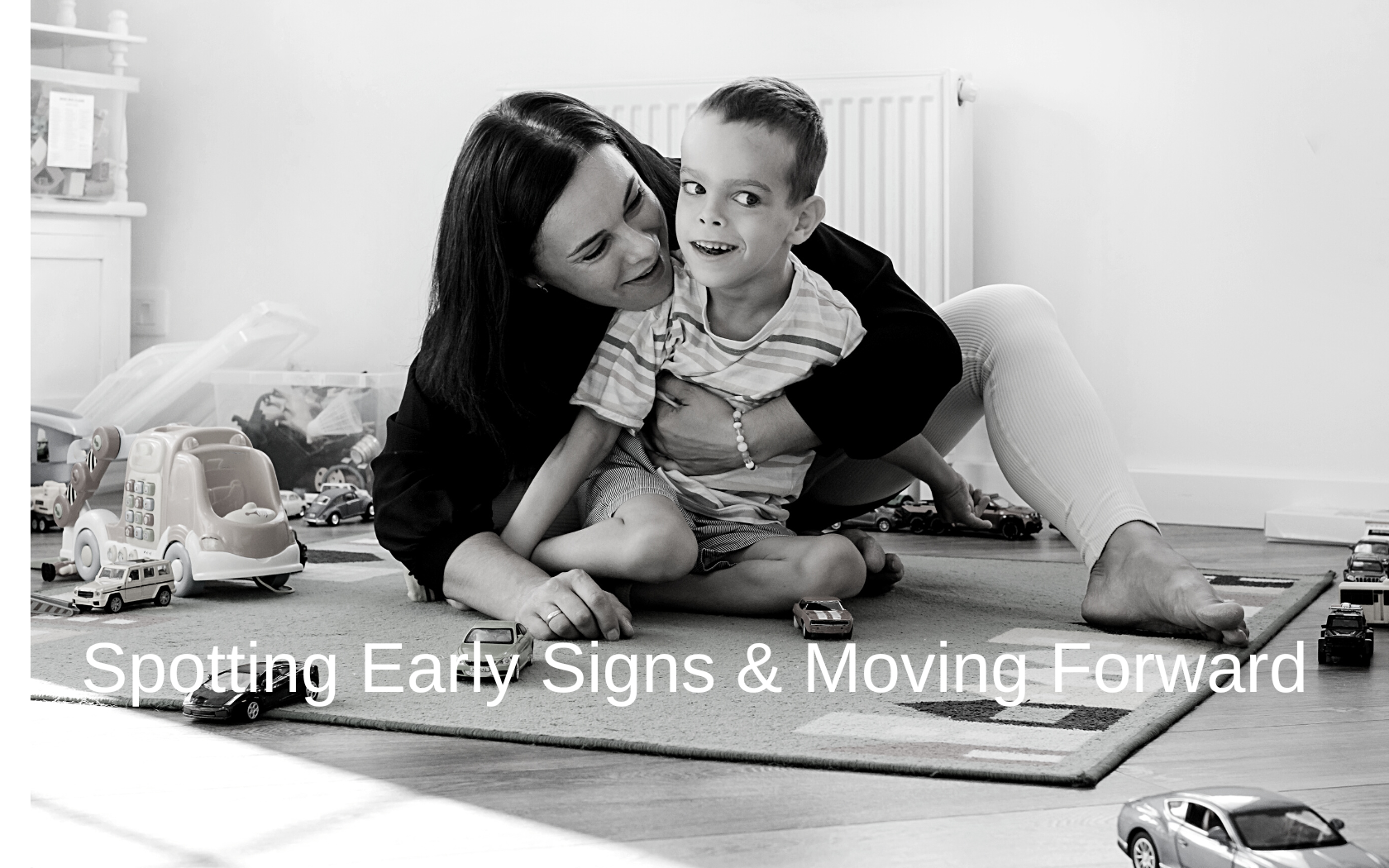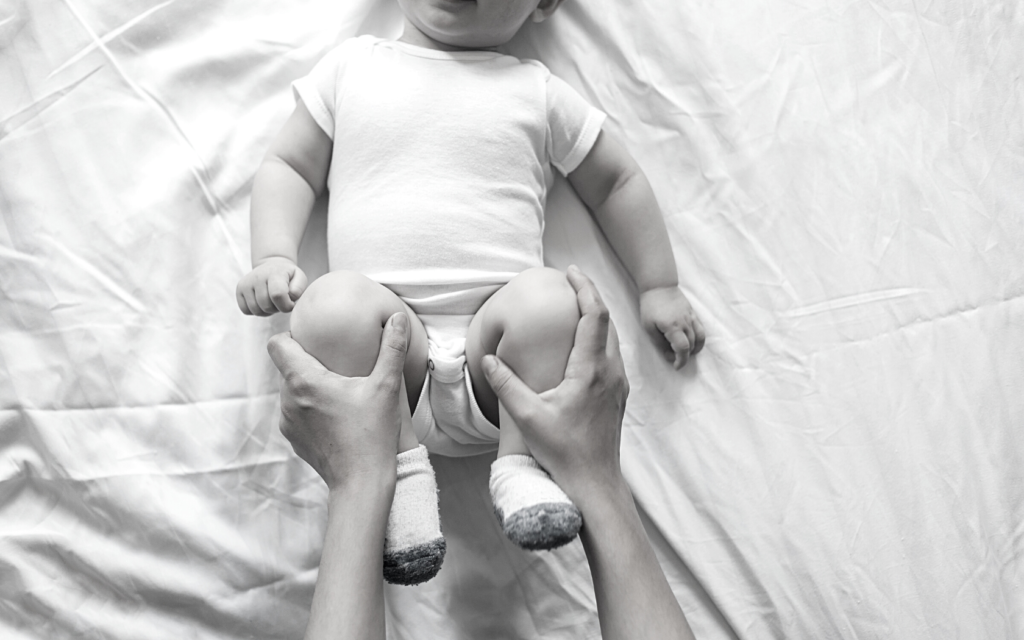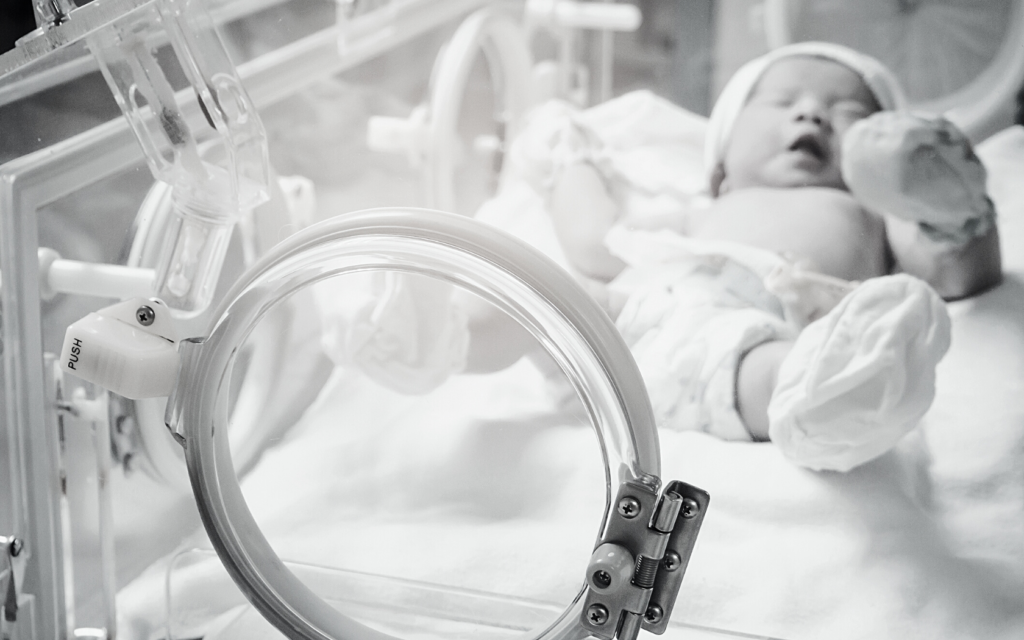Signs of cerebral palsy in babies are like fireflies at dusk. They’re subtle and can be seen better as time goes on.
This is why many children don’t get their CP diagnosis until later. But later isn’t greater—early intervention is paramount for a child with CP to thrive. Knowing the signs of CP in infants is crucial for getting an accurate diagnosis as soon as possible.

What is Cerebral Palsy?
Cerebral palsy is a group of disorders that affect movement and posture. The cause of CP is damage to the brain that happens before, during, or shortly after birth.
This damage can happen for many different reasons. Pregnancy complications, accidents during delivery, and infections are among them. Brain damage that leads to CP can also occur as a result of a doctor’s negligence.
How does brain damage affect movement and posture? Well, your brain is like a command center that tells your body what to do. In someone with cerebral palsy, the command center that controls the muscles has trouble communicating with them. This can cause difficulties in walking, talking, and doing everyday activities.
Why You Should Know the Signs of CP in Babies
Doctors need to know the signs of cerebral palsy in babies to make a correct diagnosis. That way, they can prescribe treatment as early as possible.
But no one spends more time with your baby than you. By knowing the signs of cerebral palsy in babies, you can report them to your doctor when you observe them at home. This may help your child get a diagnosis sooner, rather than later.
An early diagnosis leads to early treatment. Early treatment creates better outcomes for children with CP. But there’s one more reason why you should seek a prompt diagnosis for your child. If negligence is to blame for their CP, you may be entitled to compensation. A monetary award from a birth injury lawsuit could pay for your child’s treatment and give them a better quality of life.
When is Cerebral Palsy Diagnosed?
The signs of cerebral palsy in babies usually begin to show in the initial months of life. However, a child might not receive a diagnosis until much later. Most children with CP get an accurate diagnosis when they’re age two or older.
Why is diagnosis sometimes delayed? The signs and symptoms of CP can be subtle. Some of them overlap with other medical conditions.
CP may be mistaken for a different disorder, like:
- Metachromatic leukodystrophy
- Infantile neuroaxonal dystrophy
- Muscular dystrophy
- Pelizaeus-Merzbacher disease
- Rett syndrome
- Developmental delay
Doctors can’t diagnose CP based on the signs alone. They need to look at the parents’ medical history. They might ask you to have a specialist perform a developmental evaluation.
In addition, a variety of scans and tests can help rule out or confirm CP.
These may include:
- Brain imaging tests, such as X-ray computed tomography (CT scan) or magnetic resonance imaging (MRI).
- An electroencephalogram (EEG)
- Genetic testing
- Metabolic testing
- Cranial ultrasounds
- Hearing tests
- Vision tests
- Speech tests
- Intellectual tests
- Blood tests
What are the Signs of Cerebral Palsy in Babies?
Signs of CP often become more apparent with age. So a newborn with cerebral palsy may not exhibit any noticeable signs. Keep this in mind as you observe your child. Be sure to speak with your doctor about any concerns you may have.
Signs of Cerebral Palsy By Age
A newborn with cerebral palsy might have these symptoms:
- Poor head control
- Higher-than-normal muscle stiffness, most noticeable during movement.
- Unusual limpness or floppiness in their muscles.
- When cradled in your arms, they may overextend their back and neck. It might seem like they’re pushing away.
- When lifted, their legs may become rigid and cross or scissor.
Signs of cerebral palsy in babies over 6 months include:
- Reaches out with one hand, but keeps the other in a fist
- Has trouble putting their hands together
- Can’t bring hands to mouth
- Can’t roll over
- Has involuntary movements
- Vision and hearing problems
For babies 10 months and older, signs of cerebral palsy include:
- Abnormal posture
- Difficulty crawling on all fours
- Poor balance in general
- Drags one side of the body while trying to crawl
- Shuffles on their buttocks or hops on their knees instead of crawling
- Excessive drooling
- Misses developmental milestones
- Lacks fine motor skills

Signs By Type of CP
As we mentioned above, cerebral palsy is a group of disorders. Each type of CP has its own set of signs and symptoms.
Let’s take a look at each type and its signs/symptoms:
Spastic Cerebral Palsy
This is the most common type of CP. Its primary characteristic is spasticity (stiffness and tightness of muscles). This can affect one group of muscles (monoplegia), one side of the body (hemiplegia), or all four limbs (quadriplegia or diplegia). The baby or child’s movements may look jerky or stiff. Spasticity in the oral muscles can also lead to difficulties with speech and swallowing.
Dyskinetic (Athetoid) Cerebral Palsy
This type of CP involves involuntary movements. A newborn with cerebral palsy might have uncontrolled movements of their face, arms, and trunk. They may jerk their arms repeatedly or writhe about slowly. As they get older, they may have difficulty controlling their posture, making it challenging to sit or walk. Speaking and swallowing issues can occur as well.
Ataxic Cerebral Palsy
The term “ataxia” refers to problems with balance and coordination. Individuals with ataxic cerebral palsy often have shaky movements. For example, they may have “intention tremors” when they try to reach out to grab an object. They have difficulty with precise tasks like writing and problems with depth perception. Walking may be unsteady, with feet placed wide apart and a “wobbly” gait.
Mixed Type Cerebral Palsy
Some children have a combination of symptoms from more than one type of cerebral palsy. For example, the most common combination is to have both spastic and dyskinetic symptoms.
Additional Symptoms of Cerebral Palsy
The symptoms and signs of cerebral palsy in babies can vary widely. They depend on the location and extent of the brain damage that led to CP.
Besides movement and posture issues, some children may have some additional challenges, such as:
- Intellectual or developmental disabilities
- Behavior and emotional challenges
- Respiratory issues (severe forms of CP can affect lung function)
- Sensory impairments
- Difficulties with speech and communication
- Orthopedic problems
- Gastrointestinal issues like gastroesophageal reflux (GERD) or constipation.
- Dental issues
- Epilepsy

Legal Help for Families of Children with CP
Is medical malpractice to blame for your child’s cerebral palsy? If so a lawyer specializing in medical malpractice can help you pursue legal action.
CP Birth injury cases often involve:
- Negligent prenatal care
- Delivery room errors
- Postnatal care issues
Families of children with CP have to shoulder substantial financial expenses. Their children may require a lifetime of medical care, therapy, assistive devices, and other necessary services. A lawyer can help you pursue compensation to cover these costs.
At Hampton & King, we provide the guidance and support families need to navigate the legal system. Should you have a viable case, we’ll use our expertise to secure the resources and services necessary for your child’s well-being. Contact us for a free consultation today.




